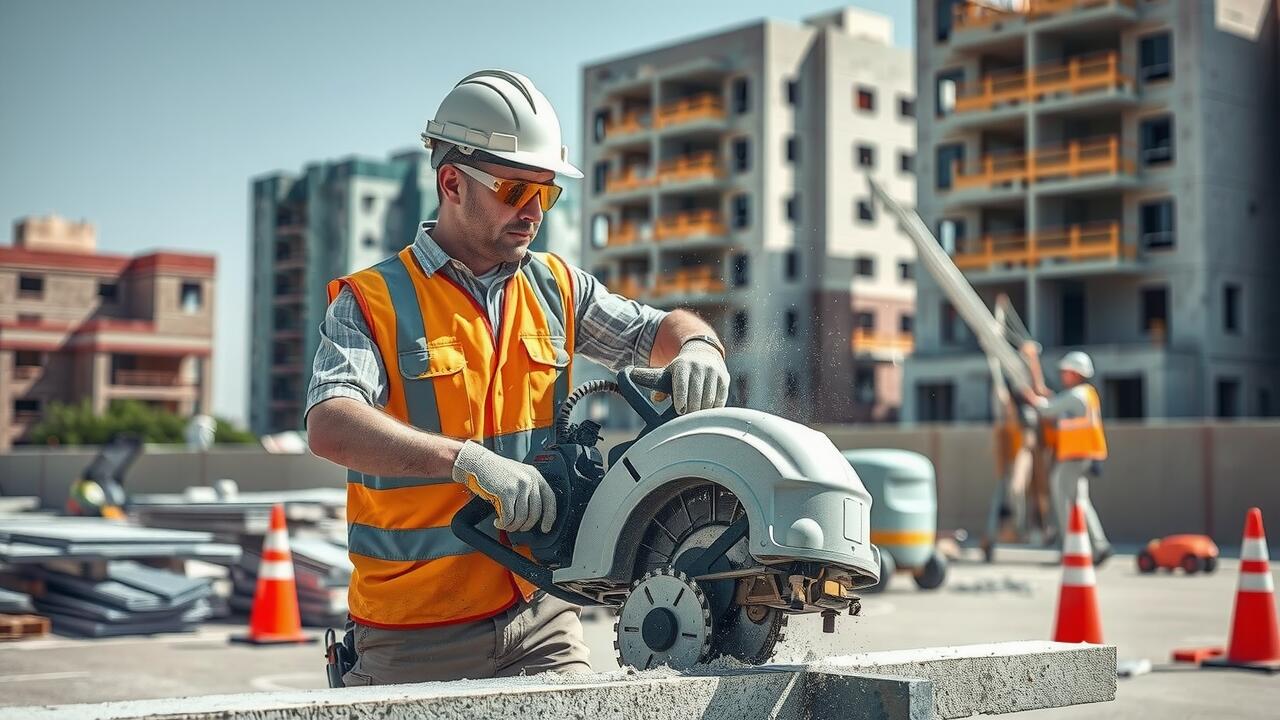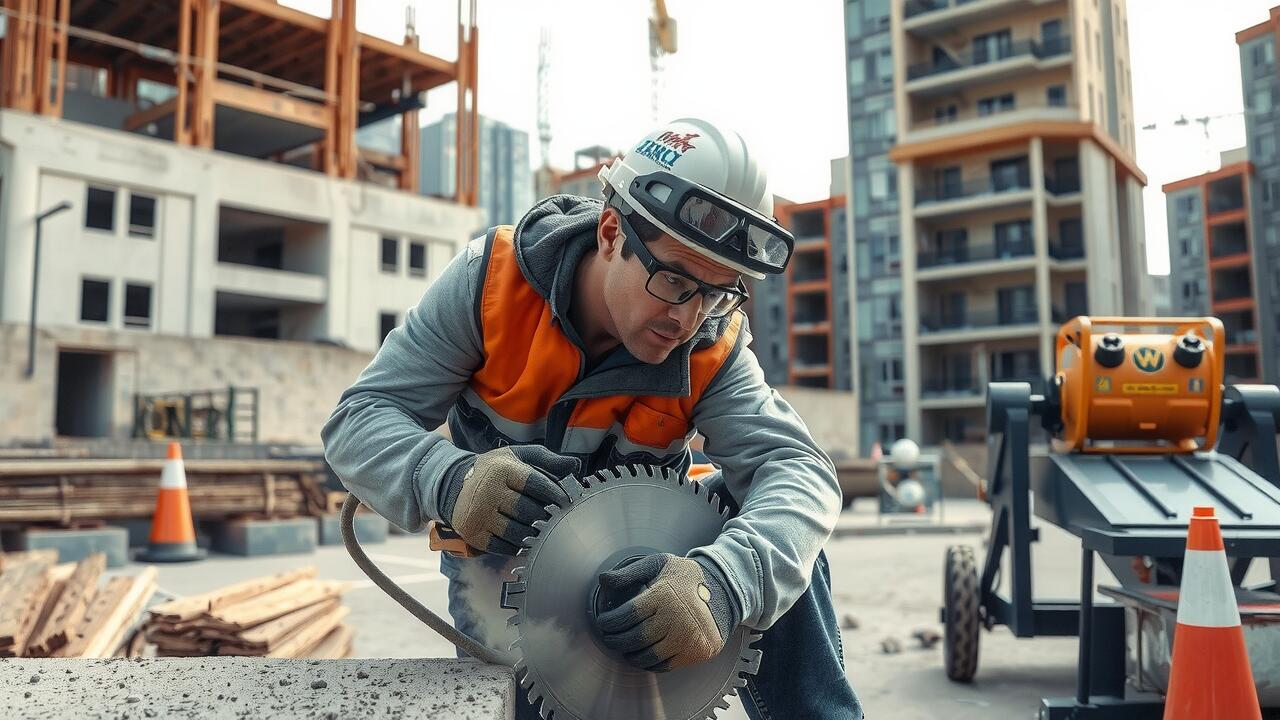
Table Of Contents
Managing Dust and Debris
Concrete cutting generates a significant amount of dust and debris, which can create safety hazards and complicate the work environment. It is essential to implement effective dust management practices to protect both the project site and surrounding areas. Adequate containment measures, such as plastic sheeting or temporary walls, can confine the dust to a specific area. Utilizing tools equipped with dust extraction systems is another proactive approach that captures finer particles at the source, reducing airborne dust.
In addition to containment, planning for debris disposal is crucial for maintaining a clean worksite. Setting up a designated area for collecting cut materials helps streamline the cleanup process. Regularly removing debris not only enhances safety but also improves overall workflow efficiency. Workers should wear appropriate protective gear, such as masks and goggles, to minimize exposure to dust created during concrete cutting. Ensuring everyone on site is aware of dust management protocols fosters a safer and more organized environment.
Effective Dust Control Solutions
Effective dust control is essential during concrete cutting to maintain a safe and clean work environment. Utilizing water during the cutting process can significantly minimize dust generation. Wet cutting techniques not only reduce airborne particles but also help to cool the blade, resulting in cleaner cuts. In addition to water, vacuum systems equipped with HEPA filters can effectively capture dust at the source, ensuring that most of it does not disperse into the air.
Another solution involves using dust extraction tools that are specifically designed for concrete cutting. These tools often come with attachments that fit standard cutting equipment, making them easy to integrate into existing workflows. Regular maintenance of these systems is crucial to ensure maximum effectiveness. Implementing these dust control solutions not only protects the health of workers but also helps maintain the integrity of the surrounding area during concrete cutting projects.
Timing Your Concrete Cutting
Proper timing for concrete cutting can significantly impact the efficiency of a residential project. It’s crucial to consider the environmental factors, such as temperature and humidity, which can affect the curing process of the concrete. Cutting too soon may disrupt the integrity of the slab, while waiting too long can make the task more challenging. Scheduling cutting at times when noise restrictions are minimal is also important, ensuring you don’t disturb the neighbors.
Another key aspect of timing involves coordinating with other trades involved in the project. By planning concrete cutting around other construction activities, you can streamline workflow and minimize delays. For instance, if plumbing or electrical work needs to occur before or after concrete cutting, aligning these tasks can lead to a more efficient process. Keeping communication open with all parties involved will facilitate better scheduling and enhance overall project efficiency.
Best Practices for Scheduling
Scheduling concrete cutting effectively requires careful consideration of several factors. Start by assessing the project timeline to determine the best time for this noisy task. Identify periods when neighbors are least likely to be disturbed, especially in residential areas. Additionally, consider coordinating with other tradespeople working on-site to avoid conflicts and overlapping work.
Morning hours are often ideal for concrete cutting due to cooler temperatures, which can help maintain better cutting efficiency. Be mindful of local regulations and noise ordinances that may dictate permissible work hours. Clear communication with everyone involved ensures that everyone is on the same page regarding the schedule, ultimately facilitating a smoother process for concrete cutting.
Post-Cutting Cleanup Procedures
After completing the concrete cutting process, it is crucial to conduct a thorough cleanup to maintain a safe and organized work area. Begin by collecting larger debris, such as chunks of concrete and equipment that may have been scattered during the cutting. Use a broom or shop vacuum to remove dust and smaller particles from the surface. This helps prevent slips and ensures that the workspace remains conducive to any subsequent tasks.
In addition to removing debris, inspect the surroundings for any potential hazards left behind. Pay close attention to the tools used during concrete cutting, ensuring that they are properly stored and cleaned after use. Not only does this promote safety, but it also extends the life of the tools. Lastly, consider disposing of waste materials in accordance with local regulations to support environmental responsibility during residential projects.
Steps for a Tidy Workspace
Keeping a workspace tidy after concrete cutting is essential for safety and efficiency. Begin by removing any large debris immediately after cutting is completed. This includes chunks of concrete and any other materials that may pose a trip hazard. Use a broom and dustpan to collect smaller particles, ensuring that no dust or debris is left behind. Utilizing a vacuum specifically designed for construction can further assist in clearing away fine dust that may linger.
After the larger debris has been addressed, it’s important to inspect the area for any tools or equipment that may have been misplaced during the project. Organizing tools and returning them to their designated storage places prevents clutter and reduces the chance of accidents. This careful attention to cleanliness not only promotes a better working environment but also sets a professional tone for future projects involving concrete cutting.
FAQS
What are some effective dust control solutions during concrete cutting?
Effective dust control solutions include using water to dampen the cutting area, employing dust collection systems, and wearing appropriate personal protective equipment such as respirators and masks.
How can I best schedule my concrete cutting project?
Best practices for scheduling involve planning the cutting during times when there is minimal disturbance, coordinating with other contractors, and considering weather conditions to avoid delays.
What steps should I take for cleanup after concrete cutting?
Post-cutting cleanup procedures include sweeping or vacuuming the area, disposing of debris responsibly, and ensuring that all tools and equipment are returned to their proper places.
Why is it important to manage dust and debris during concrete cutting?
Managing dust and debris is crucial for maintaining a safe working environment, preventing respiratory issues, and minimizing mess, which can also help in maintaining good relations with neighbors and homeowners.
Can I perform concrete cutting myself, or should I hire a professional?
While some homeowners may choose to perform concrete cutting themselves, it’s recommended to hire a professional for larger projects, as they have the expertise and tools necessary to ensure safety and efficiency.

